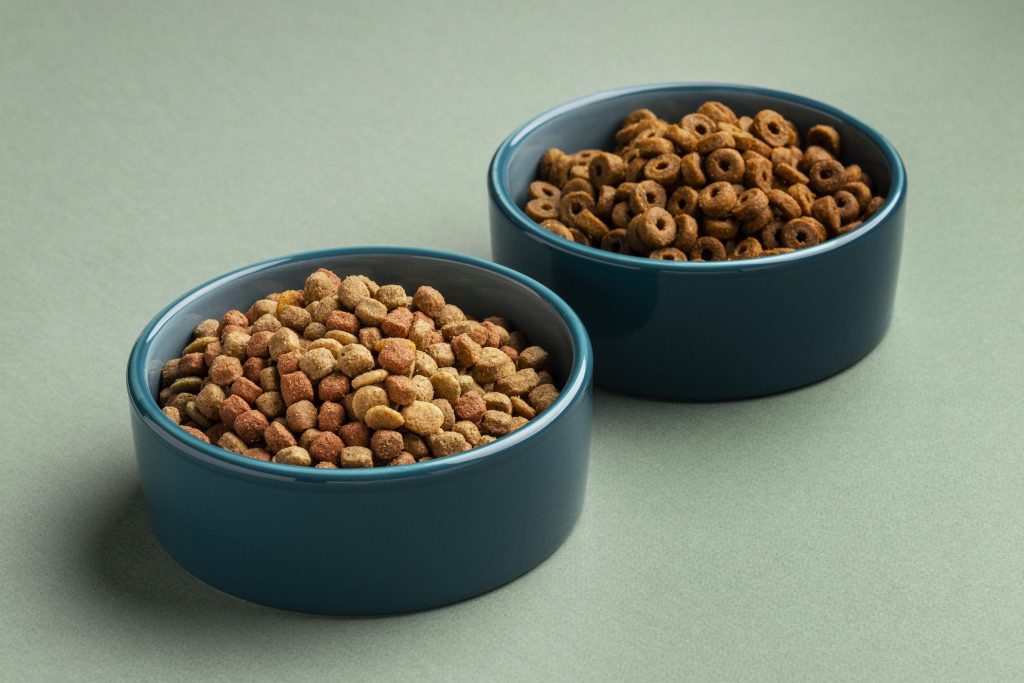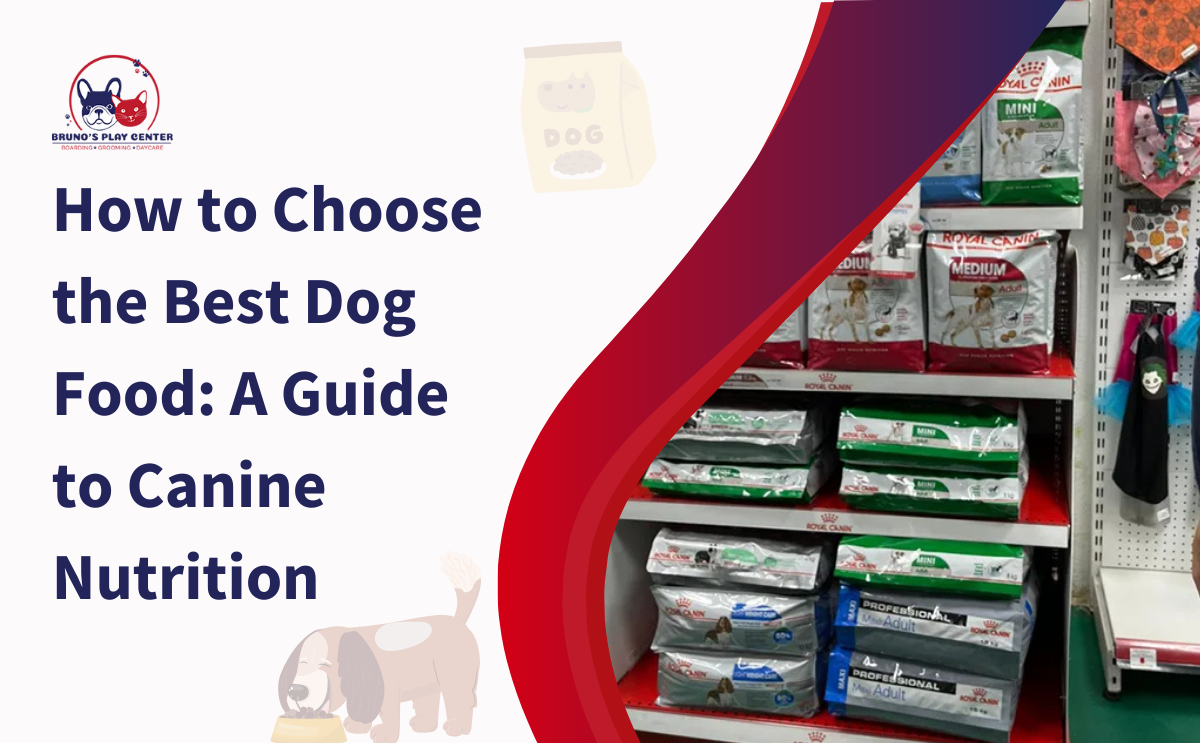You’ve probably heard the saying “you are what you eat,” right?
Well, it applies to your dogs, too. What you put in their bowl plays a huge role in how they feel, how they grow, and even how long they stay by your side.
Of course, as dog parents, you want to ensure that your pets are consuming foods rich in essential nutrition that keep their tails wagging and their eyes bright.
But let’s be totally real, multiple food options available in the market can make you feel overwhelmed.
So, how to choose dog food that is best for your furry friend is the real question.
Read along to discover the key factors to consider when choosing food that keeps your dog happy, healthy, and thriving in the hot weather of Dubai.
Why is Choosing the Right Food Crucial for Your Dog’s Well-being?
Imagine if you were given the same meal every day; you wouldn’t be excited to eat, right? Your dog is no different from you.
The right food provides energy not just to your dog’s digestive system but also comfort to its inner self, keeping tails wagging and moods balanced.
Poor eatery choices, on the other hand, can lead to chronic issues like obesity, joint problems, skin disorders, and digestive distress. They require a personalized approach to food, one that evolves with their needs.
Factors That Influence Dietary Requirements
You cannot expect dog food to be one-size-fits-all. Every pet is different, so let’s understand what shapes your pup’s nutritional value:
Age & Life Stage
Puppies need more protein, fats, and calories to support rapid growth. Adult canines, on the other hand, need meals focused on maintenance, while senior dogs benefit from lower-calorie options and joint support to accommodate their slower metabolism.
Breed and Size
A tiny Chihuahua doesn’t burn calories like a German Shepherd. Small breeds often require calorie-dense kibble, while large breeds need formulas with measured mineral content to support bone health.
Activity Level
Is your dog a couch potato or a ball-chasing machine? Well, this decides the type of food you give to them.
Hyperactive puppies need higher caloric intake and protein-rich diets compared to sedentary or older pets.
Health Conditions
Allergies, diabetes, pancreatitis, and kidney disease are all chronic or acute illnesses that demand specific nutritional interventions. For example, dogs with kidney issues often need low-phosphorus, high-quality protein meals.
Common age-related health conditions in senior canines, like arthritis, cognitive decline, and heart disease, also require tailored diets to manage symptoms and improve quality of life.
Weight and Body Condition
Underweight dogs may need fat-rich foods, while overweight ones need calorie-controlled meals with added fiber.
Food Sensitivities or Allergies
Some people are sensitive to common proteins like chicken or grains. In such cases, limited-ingredient diets or novel protein sources (duck, venison) may provide them relief.
Essential Nutrients Every Dog Needs

Dogs’ meals should include a mix of nutrients that support everything from their muscles to their immune system. Let’s break down the key nutrients your furry friend needs to thrive:
Protein
The essentials in a dog’s diet include meat, poultry, or fish, which should ideally be included. It supports muscle development, hormone production, and tissue repair.
Carbohydrates
Yes, dogs can digest carbohydrates. Whole grains, sweet potatoes, and brown rice provide energy and fiber, but balance is key.
Fats and Fatty Acids
Healthy fats enhance brain function, skin health, and hormone regulation. Omega-3s from fish oil, flaxseed, or algae are especially beneficial.
Vitamins
Consider these as the “behind-the-scenes” operators. Vitamin A for vision, B-complex for metabolism, and vitamin E for immunity.
Minerals
Calcium, phosphorus, magnesium, and zinc are essential for everything from bone density to nerve function. Look for the proper ratios.
Fiber
Fiber is not just for digestion; it also helps maintain gut health and regulate weight. Beet pulp, pumpkin, and flaxseed are fiber-rich options.
Probiotics and Prebiotics
These support a healthy gut microbiome, which is linked to immunity and mood regulation. They are great for dogs with sensitive stomachs or post-antibiotic recovery.
How to Read Dog Food Labels and Understand Ingredients?
Finalizing your dog’s diet and reading the food label is like learning a new language. But once you know what to look for, you’re totally aware of the knowledge that can transform your dog’s health.
Check the First Five Ingredients
The first five ingredients listed make up the majority of the formula. If you see real meat, whole grains, or vegetables first, that’s a pretty good sign. If it starts with “meat by-product,” then reconsider because this means lower-quality protein from unspecified animal parts has been used.
Look for Compliance with Feed Regulations
Ensure the dog food in Dubai meets the nutritional standards. Ensuring compliance gives you peace of mind that you are giving your pet only certified good food.
Validate the Nutritional Adequacy Statement
Locate the phrase “complete and balanced” on the label. This small but crucial phrase on the label confirms whether the food is formulated with all necessary nutrients or is just claiming to sell.
Understand the Guaranteed Analysis
This section breaks down all the nutrients listed, such as protein, fat, fiber, and moisture content. It doesn’t explain the product quality, but it also gives you a quick snapshot of the ratio and percentage.
Avoid Artificial Additives
Colors, flavors, and preservatives may appeal to humans, not dogs. Always go for naturally preserved options like rosemary extract or tocopherols (vitamin E).
Recognize Safe Carbohydrates and Fillers
Avoid corn, wheat, and soy if your dog is sensitive or allergic to them. Instead, look for other grain options like oatmeal, barley, or quinoa as wholesome carb sources.
Look for Value-Added Functional Ingredients
If confused about giving glucosamine or chondroitin sulfate, as they are on the costlier side, but the benefits are better for joint health, DHA for brain development, or taurine for heart health. They are frequently recommended as natural health products in the management of canine osteoarthritis
Traceability and Manufacturing Transparency
Where and how the food is formulated matters. Brands that disclose their ingredient sources and production facilities are generally more trustworthy.
Comparing Dog Food Types: Which One’s Right for Your Pup?
One of the most common dilemmas is choosing the right type of dog food. Here’s how they stack up:
Dry Kibble
Affordable, convenient, and great for dental health. However, they lack hydration, so, make sure your pet drinks plenty of water.
Wet/Canned Food
Higher moisture content, richer in taste, and ideal for picky dogs or dealing with dental problems.
Raw and Fresh Dog Food
This diet offers high bioavailability of nutrients, but it requires handling with care due to contamination risks.
Grain-Free and Limited Ingredient Diets
Best for dogs with specific allergies or intolerances. But remember, grain-free doesn’t mean carbohydrate-free like sweet potatoes, chickpeas, green peas, etc. Always look for the full ingredients list.
Conclusion
Ultimately, choosing the best food might take a bit of trial and error, but understanding your dog’s unique needs, such as age, size, activity level, and health conditions, makes the dog’s dietary journey a lot smoother.
So take your time, read those labels/ ingredients on all food packaging items, and don’t settle for less than what your four-legged friend truly deserves.
And if you’re looking for more than just a pet daycare facility, Bruno’s Play Center offers personalized nutritional guidance, follows all dietary specifications you provide, and ensures your pup’s meals align with their unique needs.

